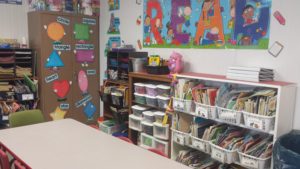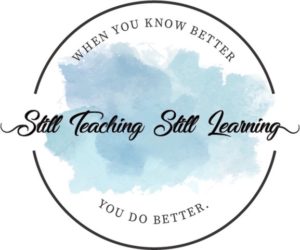There are many kids who CAN read but do not necessarily CHOOSE to read. For both parents and teachers, that can be more frustrating than any other reading issue. Here are nine ideas for how to help unmotivated readers.
Disclaimer: nothing works for everyone. This is a big collection of ideas. Pick and choose an idea to try and if it doesn’t work (or if it stops working after a period of time), try something else! But keep giving your readers the clear message that reading matters, that they will get better at it and learn to love it, and that you are here to help them do that.

1 – Take note of what they do during reading. This goes for both parents and teachers. When it’s time for independent reading, pretend to be doing something else (reading yourself, working on something) and just watch the student. You don’t have to watch them the whole time but check on them every few minutes. What are they doing? Are they staring into space, mindlessly turning the pages, looking around or looking back at you? Or do they appear to be engaged with their book?
For classroom teachers, consider using an engagement inventory of your students. I love this one from Jennifer Serravallo, author of The Reading Strategies Book: Your Everything Guide to Developing Skilled Readers and The Writing Strategies Book: Your Everything Guide to Developing Skilled Writers.



2 – If they are engaged with their book, have a chat with them when the reading time has ended. This is not an interrogation, just an opportunity to find out what they are thinking about as they read.
Here are some starter questions for fiction:
~why did you choose this book?
~are you enjoying the book? Why or why not?
~what’s happening so far?
~what do you think might happen next?
~tell me about the characters. Who is your favorite? Who is a character that you don’t like?
~what is the problem or challenge in the story? What is a character doing to solve the problem?
~does this book remind you of anything else you’ve read or seen?



Here are some starter questions for nonfiction:
~why did you choose this book?
~what did you already know about this topic before you started reading this book?
~what have you learned so far?
~what is something interesting you’ve found so far?
~what are some things you are wondering about as you read?
~what are some things you want to know more about as you read this book?
~have any parts been confusing to you?
3 – If they are not engaged with their book, find out why. Here are some questions to ask:
~how are you feeling about your book?
~why did you choose it?
~is it what you thought it would be?
~are there too many big words to break down?
~do you understand the meanings of all the words?
~do you understand what is going on in the story?
These questions help the student identify exactly what is not “working” for them with this book. Then you can offer to help them find something they want to read and that they are able to read independently. The next tip will help with that.



4 – If students tell you that they can’t find anything they want to read, try asking some questions to help identify what they might enjoy reading.
Here are some questions to try asking:
~what is the best book you’ve ever read?
~what makes a book perfect for you?
~is there a genre that you enjoy?
~what is your favorite movie or TV show?
~how do you usually get ideas for what to read next?
Melissa at Imagination Soup has great suggestions for books for kids. She creates lists by age and interest. This is my go-to list whenever I am looking for book suggestions for my students.
Amazon is another great resource. If kids tell you that they like a certain book or certain series, try typing “books like _______” in the search bar to get some suggestions!
5 – One of the very best ways to help your students or children become readers is to model being a reader yourself. For parents — read when you’re children are reading. Read whenever you can and make it clear to your child that you do all kinds of reading, in different formats, all day long. Tell them how you read for a purpose (to get information, to learn how to do something) and that you read for pleasure. For teachers — tell students about what you are reading. Use the same suggestions for parents above. Make it clear that reading is not only necessary but pleasurable. Most important for both parents and teachers: read aloud to your child, even after they can read themselves.



6 – If you’re wondering about reading levels and which leveling system correlates with other leveling systems, here is a handy chart from Jennifer Serravallo:
7 – Help students notice when they are “fake reading” and how to get back on track. The first step is to de-mystify it by admitting that all readers fake read sometimes. What the best readers do is to notice when it is happening and to use strategies to get back on track with their reading.
Some strategies for getting back on track when you catch yourself fake reading:
~stop and think about what you’ve been reading (see more about this strategy below);
~take a stretch break;
~change position or get comfortable;
~go back and reread (a few paragraphs or a few pages — until you find the last part you actually remember reading).



8 – Encourage students to “stop and think” frequently while they are reading. This helps them be more reflective about their own understanding of what they read and helps them notice if they need to go back and re-read a section. “Stop and think” is my favorite reading strategy because it works with all kinds of reading, with any genre, and with both text-based and online reading.
What to “stop and think” about?
Here are some suggestions for fiction:
~what is happening in this part?
~which characters are in this part and what are they doing and saying?
~what is the challenge or issue they are trying to work on?
~how are the characters changing or adjusting?
Here are some suggestions for nonfiction:
~what was this section about?
~how did this information fit with what I already know or what I have already learned?
~what are my questions or wonderings?
~what are some new words I read and what do I think they mean?



9 – Encourage students to set goals for their reading. Here are some ideas.
~Decide how many pages they want to read each day. Place a sticky note on their “stopping point”. They can choose to read past that point, of course, but reading at least that many pages would be the goal.
~Increase the amount of time spent reading by a certain amount each day. Adding on just five more minutes tends to be an achievable goal.
~Stop and break down words that are tricky to read (instead of skipping them).
~Reread a part or read it out loud to work on fluency (both reading rate and reading with expression).
~Visualize what you are reading. Some teachers call this “making a movie in your mind.” Picture the characters and the events as they are happening.
~Notice when that “movie in your mind” stops. Go back and reread until you can start picturing the events again.
~Keep track of the characters in a book by keeping a sticky note in the front of the book. List character names and how they are related to the main character (brother, aunt, friend, etc.).
~Think about how the characters interact with each other. What is going on between them that the author might not be telling you? (“Reading between the lines” or making an inference.)
~Think about what the big life lessons might be in the book.
~Think about the social issues that characters might be facing (discrimination, sexism, prejudice, etc.).
~Summarize a section you read in a nonfiction text.
~Think about several sections you read in a nonfiction text. What are the big ideas about the topic.
~Stop and think about what words might mean (instead of just skipping over them).
~Stop and break down big words (instead of just skipping over them).
~Talk to someone about what you read today.
~Write about something you read today.
These strategies are good for students who CAN read but may not always CHOOSE to read. If you suspect a bigger problem with reading, you might need to do a more in-depth assessment. In my next posts, I’ll give you some ideas for what to do.
Let me know if these tips work for your readers!
